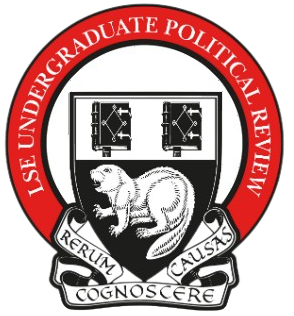As an incoming second-year undergraduate in Politics and History, I am thrilled to join the LSEUPR academic team. My name is Yining Gong, a second-year Politics and History student. Meanwhile, I am also a blogger who posts original articles on political science, political history, and international relations for more than two years. I started my blog in 2019 with several essays discussing the aftermath of the Great War and the formation of the Treaty of Versailles. Other than a series of articles discussing historical topics, my blog went on to explore more controversial issues like the effectiveness of the British Civil Service, the long-lasting Polish Constitutional Crisis, and even the recent Afghanistan evacuation. My personally preferred area of study will be the developmental states in East Asia during the Cold War period, especially in the case of Japan.
The piece of work that I am going to discuss regarding this area of study is not a simple article, but rather a book that provided fresh insight into this controversial topic. As many should already have heard or even read about this well-known and appreciated work, “MITI and the Japanese Miracle: The Growth of Industrial Policy, 1925-1975” offered a unique, and later dominating explanation for the Japanese economic miracle after the Second World War. The book consists of 9 chapters, which are then composed in two distinctive writing styles. Chapters 1, 2, and 9 provides an analytical writing style to assess the economic bureaucracy that had existed within the Japanese government since the 1920s. Through these examinations, Johnson explains what sets the Japanese model apart from the rest of the world. The other 6 chapters provided a detailed narrative of the history and identities of MITI: Ministry of International Trade and Industry.
These 6 chapters convey the book’s essential message to the readers, in which he pressed the importance to understand how bureaucratic factions had always influenced the decision-making process around Japan’s economic policy. The MCI (Ministry of Commerce and Industry) that dated to pre-WWII days and its transformation into MITI had been stressed. Furthermore, it was made clear to the readers about the inherent conflict during almost every decision-making process within MITI. This description altered people’s imagination of a consensual Japan. Moreover, a thorough discussion about MITI’s power would reveal that it hold a combination of legal authority, foreign exchange controls, taxation policies, and the capacity to wield several other monetary and fiscal policies.
Perhaps the most important message Johnson incorporated in this book is the analysation of the differences between the United States’ economy and that in Japan. While saying that the United States and a large part of the world are conforming to a “regulatory” system, which means that the free market is the most essential actor in these countries’ economic environment. The governments, or the central authorities, merely plays a regulatory role to keep a fair, open, and competitive market running. Private firms are left alone under these circumstances and governmental interference would only occur when the freedom of the market is threatened or weakened. Whereas in Japan, Johnson argued that there existed a “developmental government”. Instead of being an objective observer to the free market, the Japanese government actively participated in the development of private firms through measures carried out by MITI. The MITI was the key actor to devise and direct the direction of national economic expansion and layout the grand blueprint for Japan’s development trajectory.
Johnson explained this shocking difference through several historical reasons:
- Since the late 19th century, Japan had emphasized national economic security
- Government has close relationships with zaibatsu (financial clique): Mitsui, Mitsubishi, Sumimoto, and Yasuda
- Heavy industrialization since the 1890s to supply munitions and ships marked precedence of state-directed development
- Use of FDI (Foreign Direct Investment) to stimulate import substitution
- In the 1930s, MCI supported greater state control to develop a war economy
These historical factors have made it easy for the MITI to introduce similar state-controlled directions over the national economy. It controlled imports, technical transfers, and international capital movement in Japan, and used its “developmental bank loans” to subsidize and facilitate the growth of certain industrial sectors that is deemed a priority. Though MITI’s power was gradually reduced over time, the developmental bank loans remained its main tool to choose growth industries and provides administrative guidance to private firms in these industries.
As Johnson emphasized, readers should not mistake the Japanese developmental state with the socialist planned economy. Under the developmental state model, government permits the existence of free competition. Various companies that emerged during the post-WWII period like Sony furtherfurther proved this statement. For the developmental state model to work, it is essential that the private commercial companies in various specific industries are willing to cooperate with the government, and accept the administrative guidance provided by the MITI.
“MITI and the Japanese Miracle: The Growth of Industrial Policy, 1925-1975” is the first systematic study in the United States to analyze the causes of the Japanese economic miracle after the Second World War. In the 1950s and 1960s, the orthodox interpretation among the United States historians is that Japan’s success is a result of the U.S. occupation and continuous support during the late 1940s and early 1950s. This opinion was related to figures like Edwin Reischauer and Marius Jansen. They believed that Japan was an example of the U.S. modernization theory. While admitting that the nuclear umbrella provided by the U.S. had allowed Japan to catch the “free ride” and devote its resources to economic development, Johnson coined the term “developmental state” and provided a novel insight into how the Japanese government guided and cooperated with the private businesses to achieve their economic miracle. Although this work is bound to be controversial since it is difficult to account for the Japanese economic success with one theory, this work serves as one of the best studies into the Japanese economic model and its bureaucrat-business relationship




